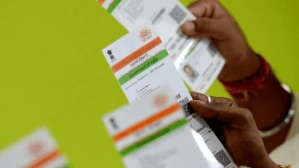ANTIQUE JEWELLERY has always fascinated collectors and the average crowds alike. However, like the jewels themselves, it has always been rare to find them in the public domain. It is more so with non-royal families, as the general tendency is to hide them in vaults.
Although some institutions abroad like the Victoria & Albert Museum, which houses over 6,000 items and is considered one of the finest and most comprehensive collectors of jewellery in the world, and British Museum—both in London—have successfully managed to preserve and restore antiques, their Indian counterparts have not been so lucky so far.
All that is changing now. The National Museum in New Delhi has recently opened its doors to Alamkara, its permanent gallery of jewellery, after it was closed for over a decade.
The attempt is to bring to light some of the ornaments that have survived the times in different parts of the country. On offer is a wide variety of exhibits—255 in all and spanning over 5,000 years—including necklaces, bracelets, pendants, bangles, earplugs, needles and girdles, among others, making the National Museum one of the country’s largest repositories of jewellery.
Alamkara houses ornaments that were or are worn by men, women as well as children. From turban ornaments along with maharaja’s jewels to earrings of the Rajasthani male, there are several eye-catching designs. The collection is neatly divided into themes like the ‘Mughal Heritage’, ‘Sartorial Splendour’ and ‘Gods and Goddesses’. Some follow chronology like the exhibits dating between 2600 and 1900 BCE that belonged to Harappa and Mohenjo-Daro, the most important cities of the Indus Valley civilisation, next to which are the Indo-Greek ornaments of Taxila city in Pakistan (first-century CE).
The exhibition then takes a leap towards the 19th- and 20th-centuries, recording the influence of European designs on Indian jewellery. Then, there is a set of four glass cases, displaying the stylistic differences of articles from the country’s north and south. There are also exhibits showcasing the flora and fauna used in ornamentation.
Bedazzled visitors have further reasons to celebrate. At the time of the gallery’s inauguration last week, Union culture and tourism minister Yasso Naik had announced: “We have a target to get all 24 galleries opened at the National Museum latest by 2015-16. Eight galleries were closed, of which four have been reopened and four more will be opened in the coming year.”







